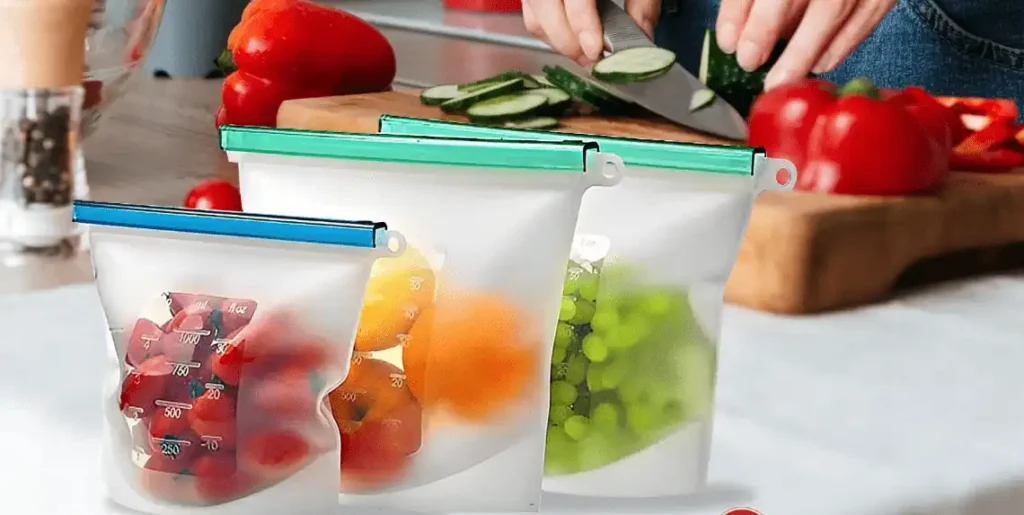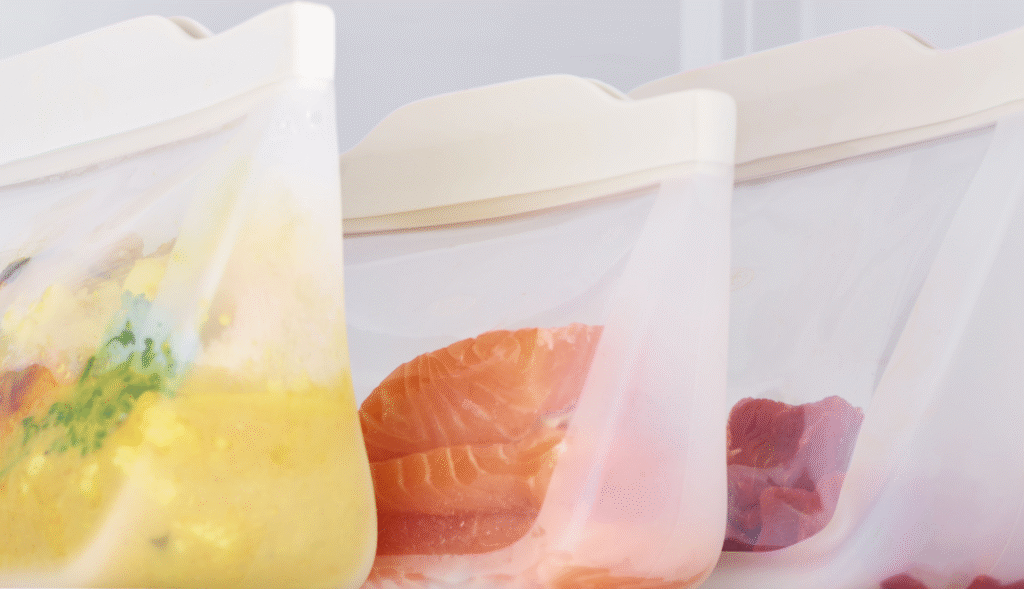Introduction
As people pay more attention to health and sustainability, silicone bags have become a popular replacement for single-use plastic bags. They can withstand high and low temperatures, are reusable, and help reduce environmental pollution. But the market is flooded with different types, prices vary widely, and quality is not always guaranteed. Many buyers end up with bags that leak, smell bad, or are not even made of food-grade silicone. So how can you choose silicone bags that are truly safe, durable, and worth your investment?

What Defines a High-Quality Silicone Bag
A high-quality silicone bag is made of 100% food-grade silicone with no fillers, BPA, or harmful additives. It should have a reliable seal to prevent leaks, a thickness that balances durability with ease of use, and the ability to handle freezing and heating. Ideally, it should also be certified by FDA or LFGB and come from a trusted brand with proven after-sales service.
Material Safety: How to Confirm It’s 100% Food-Grade Silicone
The first and most important factor is material safety. Genuine food-grade silicone is almost odorless, while poor-quality products often have a strong plastic smell. High-quality silicone won’t turn white or crack when stretched, and it can withstand over 200°C without melting or releasing harmful substances.
Here are some simple checks you can use:
- Look for packaging or product labels that say “100% Food-Grade Silicone.”
- Smell the bag; it should not have a strong or chemical odor.
- Do a stretch test to see if it turns white.
- Ask the seller if they can provide FDA or LFGB certification reports.
Thickness and Durability: Is Thicker Always Better?
Thickness is directly related to durability, but that doesn’t mean thicker is always better. A thicker bag is indeed safer for freezing liquids or storing meat, but if it’s too thick, it may become stiff, hard to seal, and difficult to clean. The best choice is a balanced thickness that remains flexible but sturdy enough to stand upright on the counter.
Practical suggestions:
- Snacks, fruits, and dry goods → medium thickness is sufficient, lightweight and easy to clean.
- Freezing soups or meat → slightly thicker bags provide extra durability.
Seal Design and Temperature Resistance
The seal determines how convenient and reliable a bag is. Zipper-style seals are good for daily use, slider seals are better for liquids, while press-to-close seals are quick but may loosen over time.
In terms of performance, a high-quality silicone bag should withstand temperatures from -40°C to 230°C (-40°F to 446°F). That means it can safely go from freezer to microwave and can even be used for sous vide cooking without releasing harmful substances.

Size Options and Household Needs
Silicone bags usually come in small, medium, and large sizes. Small bags are ideal for fruits or nuts, medium bags are perfect for lunches, and large bags work well for freezing meat or soups. For most families, buying a set with multiple sizes is the most practical choice, as it covers all kitchen and travel needs.
Certification and Brand Reliability: What to Ask Sellers
Certifications and brand reputation are often overlooked but very important. Products certified by FDA, LFGB, or SGS are much more trustworthy. Reliable brands typically have stable sales records, genuine customer reviews, and clear after-sales policies.
Questions you can ask sellers:
- Does your product have FDA or LFGB certification?
- Can you provide test reports?
- If the bag leaks or breaks, can I return or exchange it?
- Do you support bulk orders or customized logo packaging?
Common Mistakes to Avoid
When buying silicone bags, avoid these common mistakes:
- Choosing the cheapest option: low-cost bags often contain fillers and wear out quickly.
- Believing thicker is always better: too much thickness makes the bag stiff and inconvenient.
- Assuming high transparency is good: some overly transparent bags may actually contain plastic blends.
Frequently Asked Questions (FAQ)
- How can I tell food-grade silicone from poor-quality silicone? Check the label, smell, stretch test, and request certification from the seller.
- How long does a silicone bag last? Normally 2–3 years, depending on thickness and maintenance.
- Do silicone bags have a smell? New bags may have a light odor, but it goes away after washing a few times.
- Are silicone bags safe for kids? Yes, food-grade silicone is completely safe for children’s snacks and fruit.
Conclusion
The key standards for a high-quality silicone bag are 100% food-grade silicone, moderate thickness, leak-proof seals, wide temperature resistance, official certifications, and a trustworthy brand. Don’t just rely on the seller’s claims—learn how to check the material, compare designs, and ask the right questions.
A good silicone bag not only makes storage and cooking more convenient but also reduces plastic waste and protects your family’s health. Choosing wisely means making a small but impactful step toward a more sustainable lifestyle.